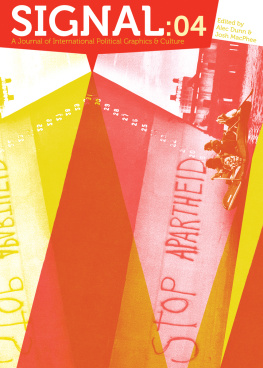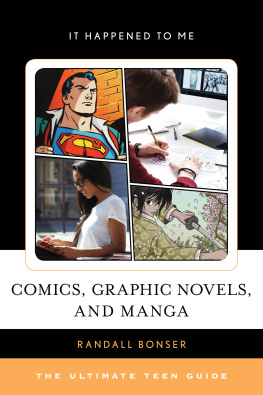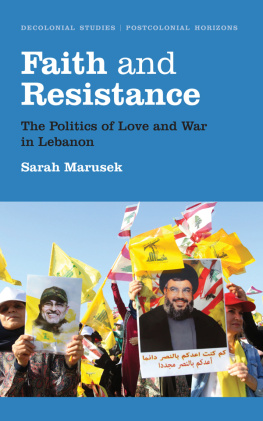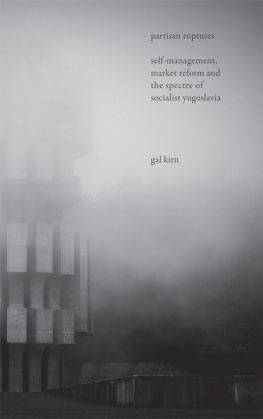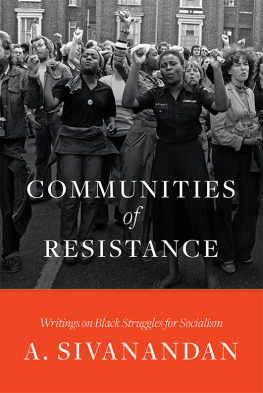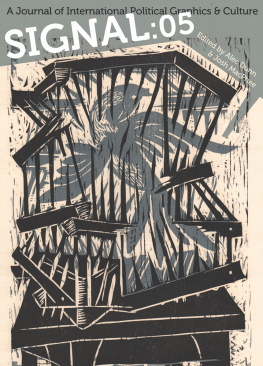

Signal:03 edited by Alec Dunn & Josh MacPhee
2014 PM Press
Individual copyright retained by the respective writers, artists, and designers.
ISBN: 978-1-60486-362-8
LCCN: 2013911524
PM Press, PO Box 23912, Oakland, CA 94623
www.pmpress.org
All design by Alec Dunn & Josh MacPhee/AntumbraDesign.org
Cover photograph c/o Robert Burghardt
Frontispiece photo from Montreal, 2012, inset graphic by Jane Norling from Paredon Records #1023, 1974.
Background image on this spread from Medu Arts Ensemble Newsletter vol. 5 no. 1. Image on following page spread by Collective Graphics Workshop from Paredon Records #1012, 1973.
Printed in the United States.
Thanks to everyone who worked on this issue, and their patience with the tardiness of the editors. Special thanks to the Kate Sharpley Library, Alan Moore for hustling Signal in Spain, Olivier Matthon, and everyone at PM Press for their continuing support of this project.
Stephen Godard unpacks Deltors 1930 anarchist-communist antiwar print portfolio
Alec Dunn and Erin Yanke interview Paredon Records cofounder Barbara Dane
David Widgington discusses the visual culture of the 2012 Qubec student strike
Spanish Anarchist Newspapers in Exile from the Kate Sharpley Library
Robert Burghardt and Gal Kirn explore the contested landscape of Yugoslavias past and future
Josh MacPhee reaches back to the Medu Arts Ensemble to see what tools can be used by artists struggling today
Signal is an idea in motion.
T here is no question that art, design, graphics, and culture all play an influential role in maintaining gross inequality. They have also been important tools for every social movement that has attempted to challenge the status quo. But not all tools are the same: we dont use a nail gun to plant a garden, or a rake to fix the plumbing. A healthy and hearty examination of how culture has been used to foster social transformation can be utilized to challenge our own current practice and give us insight into what is possible.
Signal aims to broaden the visual discussion of possibility. Social movements have successfully employed everything from printmaking to song, theatre to mural painting, graffiti to sculpture. This entire range of expression and its implications for both art and politics are open for exploration. We are internationalists. We are curious about the different graphic traditions and visual languages that exist throughout the world. We feel that broadening our cultural landscape will strengthen the struggle for equality and justice.
The production of art and culture does not happen in a vacuum; it is not a neutral process. We dont ask the question of whether culture should be instrumentalized toward political goals, the economic and social conditions we exist under attempt to marshal all material culture toward the maintenance of the way things are. At the same time, cultural production can also challenge capitalism, statecraft, patriarchy, and all the systems used to produce disparity. With Signal, we aspire to understand the complex ways that socially engaged cultural production affects us, our communities, our struggles, and our globe
We welcome the submission of writing and visual cultural production for future issues. We are particularly interested in looking at the intersection of art and politics internationally, and assessments of how this intersection has functioned at various historical and geographical moments.
Signal can be reached at:

JEU DE MASSACRE GAME OF MASSACRE
A N A NARCHO- C OMMUNIST P RINT P ORTFOLIO BY F RED D ELTOR (F EDERICO A NTONIO C ARASSO ) ARTICLE BY STEPHEN GODDARD
A round 1930 a remarkable portfolio of anarchical prints, Jeu de Massacre. 12 Personnages la Recherche dune Boule (Game of Massacre: 12 Figures Looking for a Ball), was published in Brussels by Les ditions Socialistes. The artists name is given as Fred Deltor, a pseudonym for Federico Antonio Carasso (18991969), an Italian-born sculptor and furniture carver. The pseudonym Deltor is contrived from Del Torino (from Turin), the artists native province in Italy. I will refer to the artist as Carasso throughout this essay.
Jeu de massacre is generally given in English as the game of Aunt Sally, which is fully described in the 1911 edition of The Encyclopaedia Britannica:
Aunt Sally, the English name for a game popular at fairs, race-courses and summer resorts. It consists in throwing hard balls, of wood or leather-covered yarn, at puppets dressed to represent different characters, originally a grotesque female figure called Aunt Sally, with the object of smashing a clay pipe which is inserted either in the mouth or forehead of the puppet. In France the game is popular under the name jeu de massacre.
Carassos portfolio comprises a printed clamshell cover (pg. 6); twelve sheets printed in the stencil technique known as pochoir (pgs. 1425); a list of the plates in French, Dutch, German, English, Russian, Italian, and Esperanto (pg. 9); and a preface by the French communist and novelist, Henri Barbusse, written in the manner of a sideshow barker (pg. 13, see appendix for full text and translation). Barbusse is best known as the author of Le Feu (Under Fire)the highly acclaimed anti-military novel based on Barbusses experiences in World War I.
The twelve pochoir prints depict twelve puppet-like figures who are targets of anarcho-communism, and are all looking for a ballthey are ready to be set up on a stage, like that depicted on the cover of the portfolio, and to be struck down in a game of Jeu de Massacre. The twelve figures are described here in English:
Military is a bullet-headed, shark-toothed, uniformed figure brandishing a scimitar whose prosthetic (or skeletonized) left leg seems tangled in barbed wire.
Property wears a black suit and is embellished with gold coins and a landlords key. He towers above an apartment building and a factory.
Philanthropy has a chest in the form of a bank vault full of cash and tosses a single coin toward a cadaverous figure (lacking an arm and a leg) in front of a hospital.
Social democracy is a two-faced figure who wields the attributes of both royalty and communism.
Justice is surmounted by a figure whose head is a gold coin and who tips her scales with his feet.
Colonization wears clothing whose patterns evoke slavery and brandishes a whip in one hand and a pistol in the other.
Fascism is garbed with a skull and bones motif as well as the colors of the Italian flag. He holds a club in one hand and an impaled head in the other. Fascism further presses one knee against the bars of a jail that holds Italy captive.
Police spy holds out a pair of handcuffs. His body is constructed in part by a monolithic building topped by a jail; and his head is outfitted with a huge ear and numerous eyes that glance up and down, right and left.
Parliament is lame and ridiculous, to judge by his harlequins garb, crutch and single wheel.
Middle-spirit [petty-bourgeois] wears a suit that is part formal and part frivolous. He raises his eyebrows disinterestedly, enumerating time and numbers from his clock-face chest and his counting fingers.
Next page

